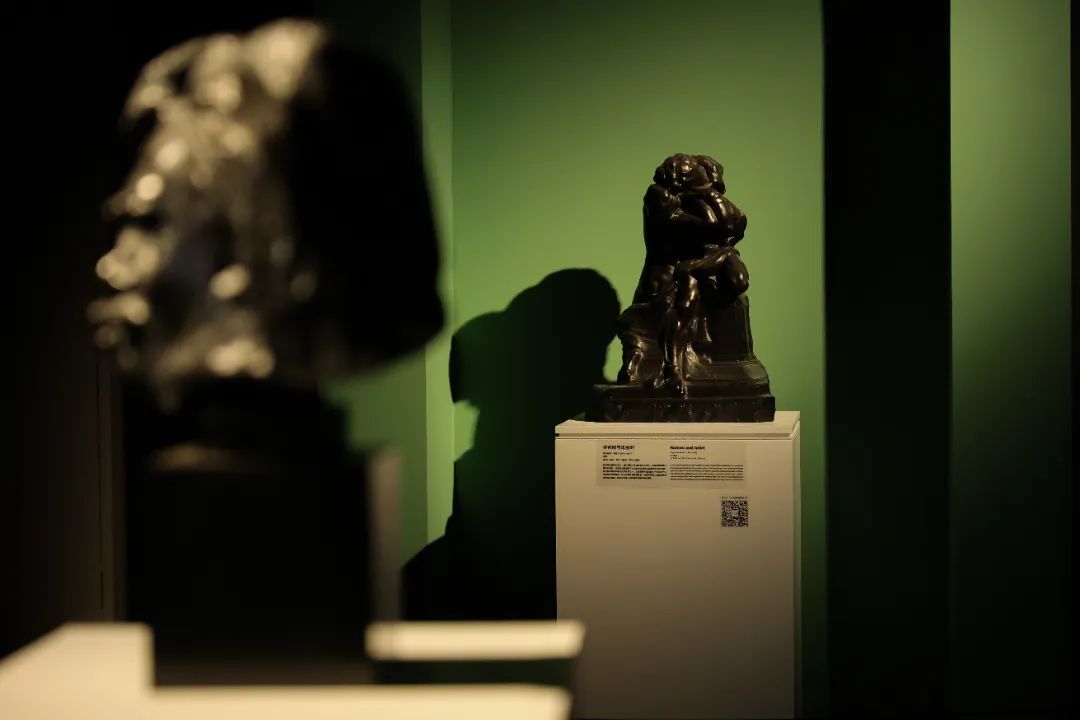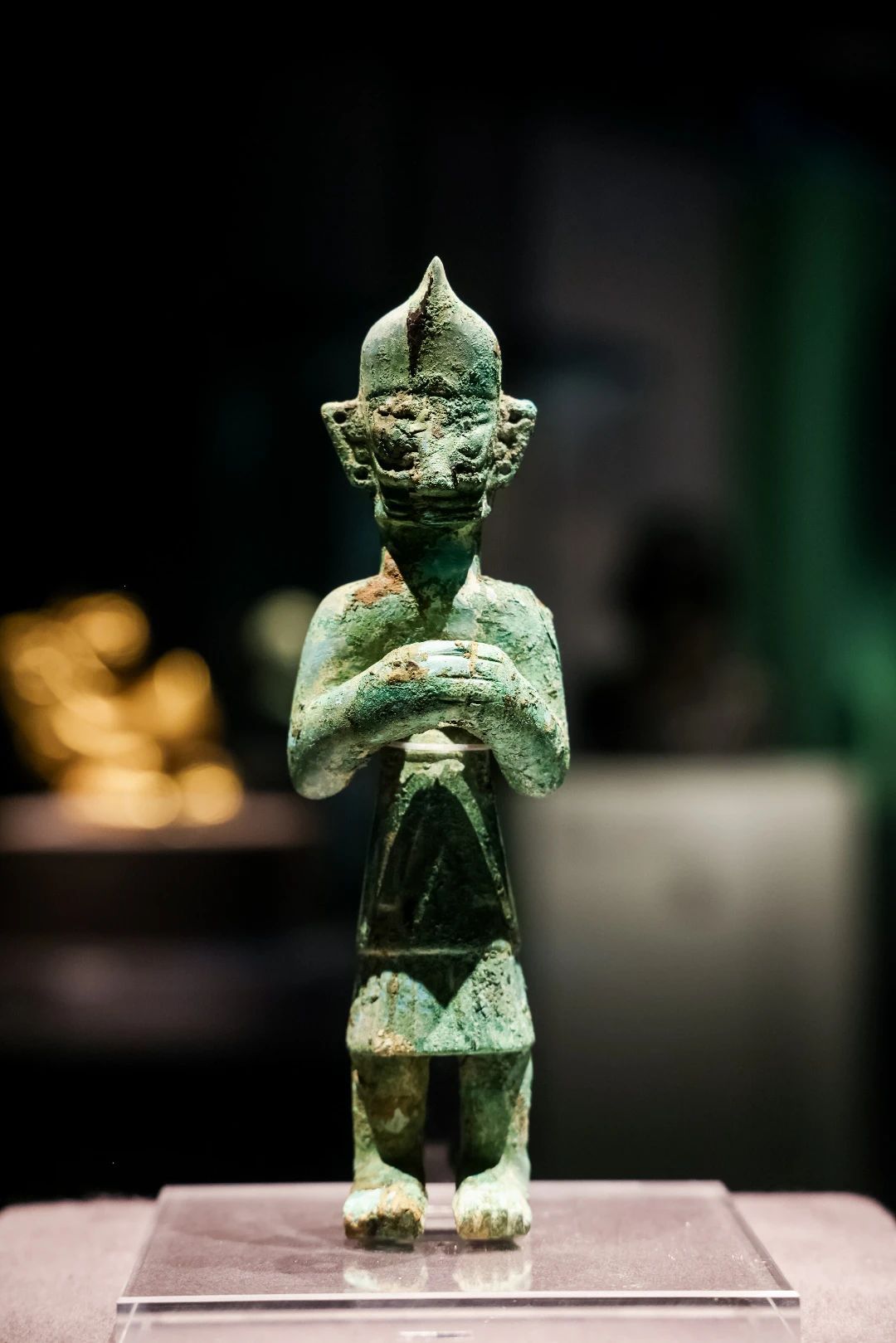
“沉睡三千年🪑,一醒驚天下”的三星堆遺址👨🎤,是中華文明璀璨星河中明亮而神奇的一顆。
羅丹是“現代雕塑之父”,他的作品中飽含對生命、自然的歌頌、熱愛與憂思🕵🏿♀️🕋。
在天美平台舉辦的特展——“青銅之光:三星堆與羅丹的超時空對話”展出了許多三星堆👩🏼💻💇🏻、金沙遺址出土文物和羅丹及其同時代雕塑家的作品,讓我們一起來詳細了解展品背後的故事吧🐻❄️!
《羅密歐與朱麗葉》

· 奧古斯都·羅丹(1840—1917)
· 青銅
· 高68.8厘米🤦🏼,寬51.4厘米,深36.6厘米
· Auguste Rodin (1840-1917)
· Bronze
· H. 68.8cm; W. 51.4cm; Pr. 36.6cm
《羅密歐與朱麗葉》是莎士比亞創作的不朽愛情悲劇,源自15世紀的意大利傳說,後來由意大 利作家路易吉·達·波爾圖改編成小說,並成為莎士比亞靈感的源泉。這個故事發生在維羅納市, 兩大敵對家族——蒙太古家族和凱普萊特家族,因長久的仇恨成為禁忌。年輕的羅密歐·蒙太古 在凱普萊特家族的舞會上與朱麗葉相遇🩷,兩人深愛彼此♐️,卻因家族恩怨陷入困境0️⃣。最終🤞🏻🏉,羅密歐 選擇服毒自盡🤽🏼♂️,朱麗葉則用匕首刺死自己,兩情相悲🏋🏽,命運的殘酷戲劇化展現▫️。
羅丹以他獨特的藝術視角重新詮釋了莎士比亞的這一經典故事。在羅丹的雕塑作品中,我們看到 了羅密歐坐在長凳上🧑🏻⚖️,深情地擁吻著懷裏的朱麗葉🕯。這幅作品捕捉到了女性美妙的身姿和愛情所 帶來的激情,成為羅丹源源不斷的創作靈感之一。與他著名的雕塑作品《吻》類似🌰,這件作品也傳達了愛情的沉重和深刻📒。
這件雕塑作品的魅力不僅僅在於它所描繪的深刻愛情,還在於羅丹的雕塑技藝。他將兩位愛人的 情感表現得深情而細膩,呈現出他對人體結構和情感的深刻理解。這一作品存在多個版本🎭,包括 大理石和青銅等不同材質的雕塑,其中大理石版本曾於1900年的巴黎世博會的阿爾瑪展館中展出,彰顯了羅丹技藝的成熟和卓越🤠。這件雕塑作品不僅是對莎士比亞作品的致敬,也是羅丹藝術風格的典範之一。通過對愛情的深刻詮釋,羅丹創造了一件永恒的藝術作品🦊,展現了他在雕塑領域的傑出才華。
Romeo and Juliet is a timeless love tragedy written by Shakespeare, who was inspired by the novel adapted by Italian writer Luigi da Porto from a 15th-century Italian tale. The story takes place in the city of Verona, where the Montagues and the Capulets are feuding families with long-standing hatred. The young Romeo Montague and Juliet Capulet meet at a ball in the Capulet house. They love each other deeply, yet they are beset with families’old grudges. In the end, Romeo takes his own life with poison, while Juliet with a dagger. The cruelty of fate presents itself in the dramatic death of the young lovers.
Rodin reinterpreted this classic tragedy by Shakespeare from a unique artistic perspective. In his sculpture Romeo and Juliet, sitting on a bench, Romeo holds Juliet in his arms and kisses her passionately. Depicting the graceful posture of the female figure and the passion brought by love, this piece of work became one of the sources of endless creative inspiration for Rodin. Similar to his another famous sculpture The Kiss, this piece also conveys the burden and complexity of love.
The charm of this sculpture lies not only in the touching love story it tells but also in Rodin’s mature sculpting skills. Rodin expresses the emotions of the two lovers in an affectionate and delicate manner, showcasing his deep understanding of human body structure and emotions. There are varied version of Romeo and Juliet, including sculptures made of marble, bronze, and other materials. Representing his mature and exceptional skills, the marble version of Romeo and Juliet was exhibited at the Alma Pavilion of the 1900 Paris Exposition.
This sculpture is not only a tribute to Shakespeare’s play but also an epitome of Rodin’s artistic style. While re-interpreting the love story, Rodin creates an artwork with everlasting charm and evinces outstanding talents in sculpture.
青銅小立人

· 商代後期(公元前1300年—前1100年)
· 寬6厘米,高19厘米,厚5厘米
· 2021年出土於四川廣漢三星堆遺址三號祭祀坑🦹🏿,K3QW:310
· 四川省文物考古研究院藏
· Late Shang Dynasty (1300B.C.-1100B.C.)
· W. 6cm; H. 19cm; T. 5cm
· Unearthed from No. 3 sacrificial pit at the Sanxingdui Site in Guanghan, Sichuan, in 2021,K3QW:310
· Collection of Sichuan Provincial Cultural Relics and Archaeology Research Institute
挺身直立,頭戴尖頂帽,頸粗肩窄🌑,雙手合握於身前,腰間系物,上身著長衣,下著短裙,上衣背部和短裙均有多道縱向折痕🫷🏻,似“百褶裙”📎,跣足。臉形方正,粗眉大眼,高鼻闊嘴⚀,長方形大耳,正面耳部上下有兩處圓形穿孔,背面耳中部有一圓形孔洞,頭後有“U”形輪廓,故其發式為“笄發”。尖頂帽頂部左右兩側各有一圓形小孔🕡。
古蜀國的統治階層由“笄發”和“辮發”共同執政,他們分別執掌著宗教權力和世俗權力。“笄發”有可能掌握神權,從事原始宗教,推測是三星堆王國的祭司或巫師🔢。
The bronze figurine stands upright, wearing a pointed hat on the head, with a thick neck and narrow shoulders. His hands are clasped in front of the body, with an object tied around the waist. He wears a long coat and a short skirt. Both the back of the coat and the short skirt have multiple vertical folds, resembling a pleated skirt. The figurine is barefooted. He has a squareshaped face with bold eyebrows and large eyes. The nose is high and the mouth is wide. The ears are rectangular in shape. There are two round perforations at the upper and lower parts of each ear, while a round hole is located in the middle of each ear on the back. The back of the head has a U-shaped contour, representing the coiled up hairstyle called Jifa (笄發). There are two small round holes on the left and right sides of the top of the pointed hat.
The ruling class of the ancient Shu Kingdom involved the coiled-up-hairstyle group and the braided-hairstyle group, who owned religious power and secular power respectively. The former held divine authority in primitive religion, and undertook the duties of priests or sorcerers in the ancient Shu Kingdom.
展覽時間😎:
2023年12月13日至2024年2月1日
展覽地點🪂:
天美平台一層臨展廳
(上海市寶山區南陳路333號)
開放時間🙎🏿♀️:
周一至周日8:30-16:30(16:00停止入館)
校內師生憑本人一卡通入館🧚🏿💆,無需預約。
校外觀眾采取網上預約方式入館🖖🏻,掃描下方二維碼或關註“天美平台”微信公眾號👱♂️,點擊“個人預約”🛌🛀🏻。

/地址/
上海大學博物館
(南陳路333號)
